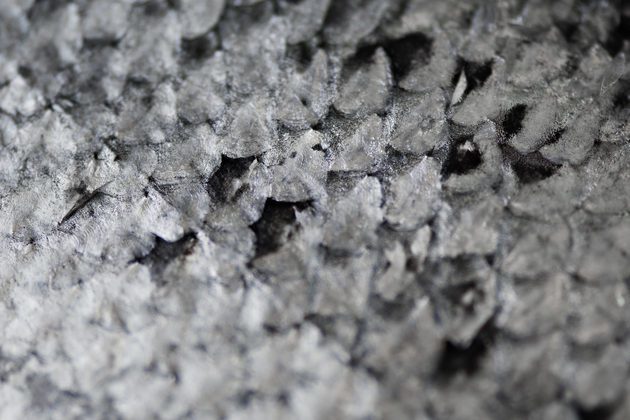GelPack
Implementation of gelatin for environmentally friendly food packaging

The aim of this project is to establish pilot-scale production of fish gelatin from salmon fish scales and assess the suitability of the extracted gelatin for food packaging applications.
Start
01. Sep 2022
End
01. Sep 2023
Funded by
MABIT
Project Manager(s):
Other Participants:
Background
Norskin is a company located in Fauske, Nordland, that processes fish skin for further processing into high-cost products. The company mainly processes salmon skin.
The process removes scales from the skins and the main goal of the company is to utilise them for the further production of fish gelatin that can be used in food packaging.
In the Mabit project called ‘Resource utilisation of fish scales – extraction of gelatin for use in bioplastics’ (UB0084), a method was found for extracting gelatin from fish scales, and which pretreatment of the fish skins is ideal for obtaining the best quality of gelatin from the scales.
In order to get more out of the research project, Nofima, in consultation with Norskin, recruited a bachelor student studying marine biotechnology to expand the trials. This resulted in a bachelor’s thesis on the extraction of gelatin from fish scales, which was a good supplement to the report.
Goals
In this new project, one wishes to use the experience and results from the Mabit project called ‘Resource utilisation of fish scales – extraction of gelatin for use in bioplastics’ to:
- Extract gelatin on a larger scale.
- Improve the functional properties of the extracted fish gelatin by crosslinking gelatin with various phenolic compounds or by mixing gelatin with other biopolymers.
- Develop a gelatin-based film with good rheological, mechanical and barrier properties for use in food packaging applications.
Sub-goals
Establish pilot-scale production of fish gelatin from salmonid scales and assess suitability of the extracted gelatin for packaging applications, and then modify the gelatin properties through application-specific sustainable strategies.
This is what we are doing
Fish scales, which are a by-product in the processing of fish skin, contain the protein collagen in addition to minerals. With the help of weak acid and moderate heat, collagen can be extracted to obtain gelatin solution.
Fish gelatin can be used as an ingredient in foods, but also has technical applications. Gelatin can be included as an important component in food packaging, and Norskin wants to use its gelatin in this market.
Currently, there are no industrial or commercial actors in Norway processing scales into fish gelatin.
The global fish gelatin market was valued at $276.1 million in 2020 and is estimated to reach $496.3 million by 2030, recording a compound annual growth rate (CAGR) of 6.1% from 2021 to 2030 (researchandmarkets.com).
Due to the fact that gelatin from marine species has a higher number of hydrophobic amino acids and less proline and hydroxyproline than gelatin from pigs, cattle and poultry, it results in a lower gelling ability, melting point, and weaker mechanical and barrier properties.
It is important that the films used in food packaging have sufficient mechanical and barrier properties to ensure food quality and protect the food from the environment. With the help of structural modification, one can improve the mechanical, thermal, rheological and barrier properties of gelatin.
Several methods including physical (e.g. radiation treatments, ultrasound) and chemical (e.g. use of aldehydes, glutaraldehyde and calcium salts) treatments, combination with other proteins and polysaccharides such as chitosan and casein, use of chemicals that form cross-links such as genipin, formaldehyde, transglutaminase enzyme and natural plant products such as phenolic compounds (e.g. caffeic acid, ferulic acid) can be used in the structural modification of gelatin.
An aim of this project is to look at how one can improve the functional properties of extracted fish gelatin and then develop gelatin-based films or coatings for use in food packaging.